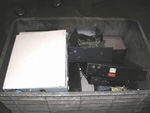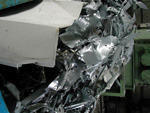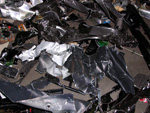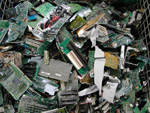WEEE R4 disposal plant
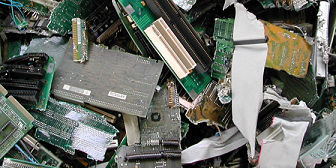
The consumer electronics is destined for its nature to dump: the generational turnover of the electronic devices become frequenter, the mobiles and computers life shorten, the electronic material to dispose increase in the volume and in the complexity. In particular, this is due to the wireless technologies introduction, that are autonomous energetically and increase the highly polluting volume also of the worn-out batteries. The big diffusion and use in the everyday life of the so-called AEE, electric and elettronic equipment, has forced the necessity to recover the different components, they are composed of, to address them singularly to specific cycle of the recycling, avoiding in this way, a waste of resources, which can be reused to build new technology products. Closely related to the recovering of materials is the issue of the pollution, due to particular polluting and/or toxic components inside these equipments. To make easier the recover of the single components and so to avoid that dangerous elements are released in the environment, it has been established clear rules for the realization of AEE and for their destination at the end of the cycle of using. From RAEE is possible to recover single components as metals, plastic, to redirect to the production, following the specific recovery and recycling processes.
Products
It is defined WEEE (Waste of Electric and Electronic Equipment) all waste that come from equipments that depend on electric current or electromagnetic fields for a correct working.
It is about technological wreckage, which can be small and big household appliances, information and for telecommunications equipments, consumer equipments, equipments for lighting, electric and electronic instruments, etc.
Since 1th January 2008, with the new decree about the management and disposal of technological wastes, the duty to look after WEEE passes from municipal bodies to the producers, which hereafter will be responsible for their own devices both before and after the commercial life on the market and in the consumers houses.
It would be therefore the above mentioned societies to collect, to sort, to dispose and maybe reuse WEEE.
Rights and duties of the consumer
Looking things from the point of view of the user, soon all regular electronic products will have the symbol of a crossed basket, that represents the prohibition for the consumer to throw them away among the generic waste.
At the purchase of a new computer (or a new dryer), it can take that one old to the seller where you buy the new product, who will be forced to withdraw it.
The obligation is worth only for a single product in the change with the new product purchase of the same type, but not of the same brand.
In the documentation of the new product there will be a text of awareness and of information about the recycling praxis and the scheduled sanction in the case of non-fulfilment.
Obligations and rights
- Producers
They have to put together in associations to provide for the collecting, the treatment and the recycling of the equipments.
They have to produce the informative documentation for users. They have to abolish from new products the use of dangerous materials for the environment.
- Distributors and sellers
At the moment of the supplying of a new equipment, they have guarantee to whom buys, the free withdrawal of the used equipment.
They have also to provide for informing the purchasers about the collection of items for recycling and the scheduled sanctions for whom transgresses.
They have to point out the environmental eco-contribution on the price label when it is requested from producers.
- Companies, professionals and privates
They are forced to not throw away products marked with the symbol of the crossed basket, in a non-differentiated way.
They have the right to ask to the seller or distributor to collect free the old products, if a new device of the same type is bought.
Process of WEEE
(Waste Electrical and Electronic Equipment) Recycling
The plant supplied from TIRES S.p.A. will be realized taking into account both of technologies existing today to the automation level and of the easy efficiency, with whom the plant can be led.
The plant is composed of five main working phases, with whom you obtain the full grinding of WEEE:
- Manual phase of elimination of toner and electrical cable.
- Automatic phase of opening of small household appliances.
- Manual phase of selection of separated product: electronic cards, transformers, motors, etc.
- Automatic phase of refining to a size of 30x30 mm.
- Automatic phase of separation of ferrous and non ferrous metals, plastics, elastomers and aggregates.
From the manufacturing, you will obtain the following separations:
- Plastic material with a granulometry of 10 mm.
- Non ferrous material, copper, aluminium.
- Ferrous material.
- Electronic printed circuit.
- Electrical transformer and electrical operations.
- Worn-out toners of printers.
